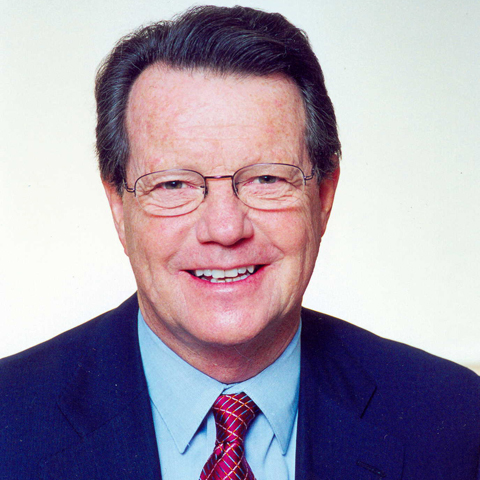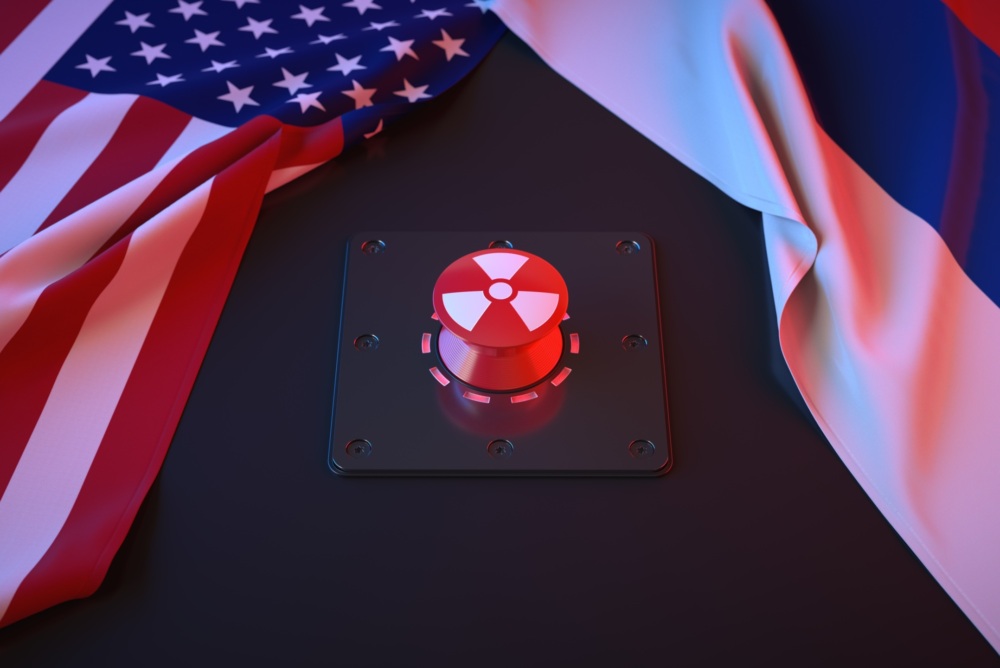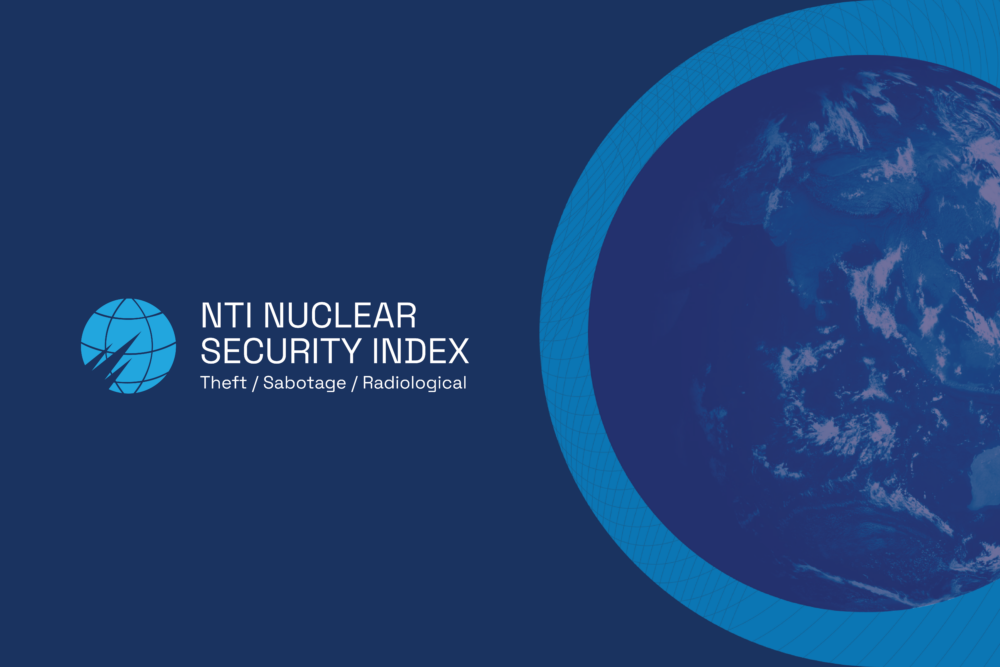
Charles B. Curtis
NTI President Emeritus and Emeritus Board Member
Charles B. Curtis
President, Nuclear Threat Initiative
Testimony before the U.S. Senate Armed Services Committee On
The Treaty Between the United States of America and the Russian Federation on Strategic Offensive Reductions
Mr. Chairman and members of the Committee, thank you for inviting me to offer my views on the national security implications of the Strategic Offensive Reductions Treaty (sometimes also referred to as the Treaty of Moscow) and discuss with you the opportunities it creates to build a safer world.
I appear before you as the President of NTI – the Nuclear Threat Initiative, a charitable organization dedicated to reducing the global threats from nuclear, biological and chemical weapons. NTI is co-chaired by former Senator — and former Chairman of this Committee — Sam Nunn and CNN founder Ted Turner. Two of your colleagues, Senators Richard Lugar and Pete Domenici sit on our Board as do two members of the Russian Duma, former Deputy Defense Minister Andrei Kokoshin and former Ambassador Vladimir Lukin.
The testimony I offer today, however, represents my own views and has not been cleared with our Board.
The Strategic Offensive Reductions Treaty that Presidents Bush and Putin signed in Moscow in May to reduce by two-thirds by 2012 the operationally deployed nuclear weapons on both sides is truly a remarkable document. I believe it deserves the Senate’s endorsement. But this Treaty’s true value is not so much in its substance, which is admittedly sparse; its only legally binding part deferred to the next decade. Instead, its value is best seen in the joint statement issued by the two Presidents and the foundation this ancillary document provides for transforming the US-Russian relationship today and in the next years to come. So I would like to address my remarks today to the steps required to bring about that transformation.
Former Senator Nunn, testifying last week before the Senate Foreign Relations Committee, called the Moscow Treaty a “good-faith treaty.” It relies on an expressed “faith” in the common vision of our leaders and in our two nations’ closely parallel strategic force plans. I agree with that characterization. This Treaty, unlike its predecessors, does not have an elaborate text born of suspicion, but ten sentences based on trust. Yet I believe a treaty built on trust can survive only with continued investment in the trust relationship by building on common interests, and gaining the trust that comes from transparency. If you never see someone do what they say they will do, trust cannot grow. When trust cannot grow, suspicions soon will.
What matters most is what happens next. As Sam Nunn has pointed out “if this Treaty is not followed with substantive actions, it will become irrelevant at best – counterproductive at worse. A good faith treaty, without follow-up, means that if relations improve, the two sides may not need it. If relations turn bad, the two sides may not [plan to] honor it.”
So I believe this Treaty must be followed with milestones and transparency mechanisms to track progress on the way to 2012. Toward that end, it’s important that the U.S. Department of Defense develop and make public at the earliest possible date its own plans for reducing our “operationally deployed” forces under this Treaty. Russia should do the same with its forces, and then both nations should follow with agreed mechanisms specifically designed to allow both sides to monitor these reductions. It is not, and will not, be enough for inspectors and site visitors under START I to look over their shoulders and try to see what’s happening on the Russian or the US side to build down forces to meet the Treaty of Moscow commitments. Moreover, as the Committee has heard, even this indirect method of monitoring this Treaty will be lost in the last three years when START I expires.
We should act quickly in the Consultative Group for Strategic Security to fill in these blind spots.
While we are working out these trust-building transparency measures, we must work with Russia to ensure an accurate accounting and the security of Russia’s tactical nuclear weapons. Tactical nuclear weapons have never been covered in any treaties or agreements – and that is an ongoing, decades-long mistake that we must correct immediately. We don’t know with any specificity how many tactical nuclear weapons the Russians have, where they are, or how secure they are. These are weapons small enough to be man-portable and powerful enough to destroy a small city. In an age of terrorist threats, this dangerous gap must be closed at the earliest possible date.
The United States and Russia should at the same time move to revise the Cold War operational status of our nuclear forces. Today, the United States and Russia have thousands of nuclear weapons on high alert, the great bulk of which are ready to launch within minutes — essentially the same posture we had throughout the Cold War.
President Bush spoke of this dangerous situation more than two years ago as a candidate for President. Decrying what he called “another unnecessary vestige of Cold War confrontation,” he said [and I quote]: “The United States should remove as many weapons as possible from high-alert, hair-trigger status. For two nations at peace, keeping so many weapons on high alert may create unacceptable risks of accidental or unauthorized launch. As President, I will ask for an assessment of what we can safely do to lower the alert status of our forces.” [end quote]
I doubt that the assessment that candidate Bush called for has yet to be presented to President Bush. The recently conducted Nuclear Posture Review – at least by public accounts – dealt almost entirely with force structure issues and did not separately discuss the alert conditions of the weapons. Similarly, the Treaty of Moscow does not explicitly address operational conditions, but by indirection, it does. The US side’s use of the term “operationally deployed weapons” to describe its commitments under the Treaty implies an extension of today’s high alert conditions at least until 2012 and perhaps for the indefinite future. As significant as are the arms reduction numbers in the Treaty, the world envisioned for 2012 – two decades after the end of the Cold War – is a world where the US and Russia would still collectively maintain several thousand nuclear weapons on high alert. To echo President Bush’s earlier quoted words: “For two nations at peace, keeping so many weapons on high alert may create unacceptable risks of accidental or unauthorized launch” — with the most catastrophic of consequences, I might add. As Sam Nunn has long advocated, we must take steps to reduce this danger. So what are the next steps to take in this area?
First, the President can and should direct the immediate standdown of the forces identified for reduction under the new Treaty. Such an action has a respected and successful precedent. President George Herbert Walker Bush ordered a similar standdown of nuclear forces in 1991, when he directed the military to unilaterally standdown the forces scheduled for reductions under the START I Treaty he had just signed. The Russians soon followed this action with a reciprocal commitment.
Second, our two Presidents should direct their military leaders to meet and return in the near future – say three months from now – with a developed set of options to begin to standdown the remaining nuclear forces deployable within the Treaty of Moscow cap levels to the maximum extent possible consistent with the national security of both countries. This is important because the more time we build into our process for launching missiles, the more time is available to gather data, exchange information, gain perspective, discover an error, or avoid a mistake. Expanding nuclear decision time may require still unidentified force structure changes, deployment changes, and other approaches. It is sure to be a complicated undertaking, but if we were smart enough at the height of the Cold War to be able to begin reducing nuclear weapons in a verifiable way, surely in the second decade after the end of the Cold War, we can find a way to expand decision time with no loss of security.
Third, our two Presidents should sweep away the bureaucratic impediments to getting the Joint Early Warning Center up and running. Countering the deterioration of Russia’s early warning and detection capability is in the security interest of both countries. We must get on with the job.
Let me also say a word about the issue of warhead dismantlement, drawing upon my past governmental experience. As you know, the Treaty does not require the dismantlement or destruction of warheads or delivery systems. There are no “force size” limitations in the new Treaty, only limitations on “operationally deployed forces.” Senators from both sides of the aisle have been right to raise questions about this matter.
Eventually, under the evolving US-Russian security relationship, we will need to address the actual size of our respective strategic forces. Beginning the dismantlement of excess warheads can contribute to this objective, build trust and also serve the larger goal of giving the world community greater assurance that the US and Russia are actually reducing their forces. In the near term, the symbolism of the act is probably even more important than the actual numbers of warheads destroyed. If asked, the Department of Energy probably could set out an explicit schedule for beginning the dismantlement of some excess weapons. Certainly some level of excess warhead elimination is already a part of the Department of Defense and the Department of Energy’s planning process.
But we must understand that while we can and should begin the dismantlement process, the development of a bilateral warhead dismantlement regime will be quite challenging, testing our available technologies and classification barriers. It is a task that must be examined in the context of US strategies and plans for maintaining the stockpile into the future in the absence of a full warhead production capability. I note here that Russia maintains multiple nuclear warhead production facilities while the US currently has none still operating. This asymmetry poses an inherent structural complication to the negotiation of a formal dismantlement regime. Therefore, while I agree that both sides should get about the job of dismantling excess weapons, I don’t believe that securing an agreement on warhead dismantlement rises to the same level of urgency as other issues. It is a logical next step if the two sides are eventually to get to agreed force size limitations, but the time frame for action is somewhat long term and certainly less immediate than that required for the securing of tactical weapons and for reducing the alert status of our remaining nuclear forces. Any ranking of next steps and any guidance the Senate may wish to give on the subject should reflect this ordering of priorities.
Moreover, many of the Treaty specific compliance issues discussed before the Committee do not rise to the same level of urgency of other issues at play in the US-Russian dynamic, such as ensuring the security of weapons materials and weapons know-how and the destruction of chemical weapons and biological weapons facilities. The critical job in cooperative threat reduction started by this Committee under Nunn-Lugar, and extended in Nunn-Lugar-Domenici, must be unblocked, refocused and accelerated. Following through on this urgent agenda has to be at the heart of the US-Russian relationship. Expanding on this agenda to engage a global coalition in the fight against catastrophic terrorism is the next essential step in realizing the full promise of the new Russian-US security relationship. Should we fail to take this last and most important step in providing for our security future, all semblance of security could be lost.
September 11, if it taught us anything, taught us this: the number of innocent people Al Qaeda is willing to kill is not limited by any political considerations, or any spark of human conscience – their capacity for killing is limited only by the power of their weapons. We must keep the world’s most deadly weapons out of their hands.
I am afraid far too many do not understand how immediate the danger is. Many Americans are aware that Osama bin Laden has said acquiring weapons of mass destruction is “a religious duty.” But fewer understand how far bin Laden has come in pursuing his so-called duty. According to reports in the last several months, the following evidence of Al Qaeda activity has been uncovered since Taliban and Al Qaeda forces fled Afghanistan:
We need to remind ourselves that these are just the documents they left behind that we have recovered. We don’t know what they took with them, nor what they left behind that we have not found.
At the same time, we know not only that terrorists are seeking weapons of mass destruction. We also know where they are looking to find them.
As the Committee is well aware, ten years ago, when the Soviet Union broke apart, it left a mind-numbing legacy of more than 20,000 strategic nuclear warheads, and enough highly enriched uranium and plutonium to make 40,000-60,000 more, stored in over 250 buildings in more than 50 sites distributed throughout the Russian Federation across 11 time zones.
Unofficial estimates of Russia’s tactical nuclear weapons vary from 3,000 to 20,000 weapons, some of which pack the destructive power of the bomb dropped on Hiroshima. As I said before, these weapons have never been the subject of arms control regimes and are largely unaccounted for. Russia also has 40,000 metric tons of chemical weapons awaiting disposition. The Shchuchye storage site alone houses almost 2 million rounds of chemical weapons – any one of which could be carried away in a suitcase and every one of which is potent enough to take hundreds and perhaps thousands of lives and create terror. Russia also has an elaborate bio-weapons apparatus, and thousands of scientists who know how to make weapons and missiles, but no longer have secure jobs or secure futures.
In the post-Soviet period, Russia’s dysfunctional economy and eroded security systems combined to undercut controls on these weapons, materials, and know-how – and increased the risk that they could flow to terrorist groups or hostile forces. Considerable improvements have come through the Nunn-Lugar Program, but we have a long way to go in Russia. Moreover, the vulnerabilities reach well beyond Russia and other parts of the Former Soviet Union.
Last May in Moscow, former Senator Nunn and Senator Lugar co-hosted a conference of Russian and American legislators, officials, and experts. The Moscow conference marked the ten-year anniversary of Nunn-Lugar cooperative threat reduction. Nunn and Lugar used this point in time to call for a new decadal effort to finish the job in Russia and the Former Soviet Union and to extend the principles of cooperative threat reduction beyond the United States and Russia to include the whole world, with Russia and the United States linked in partnership, sharing best practices and lessons learned. They called it “a Global Coalition Against Catastrophic Terrorism.” The approach was described by Senator Lugar some months ago in the Washington Post: “We have to make sure that every nation with nuclear, biological, or chemical weapons capacity accounts for what it has, secures what it has, and pledges that no other nation or group will be allowed access.” That simply stated mission should energize the world community and provide the core basis for transforming the US-Russian security relationship.
A Global Coalition against Catastrophic Terrorism must be grounded on the central security realities of our new century: First, the greatest dangers are threats all nations face together and no nation can solve on its own. Second: The most likely, most immediate threat is terrorist use of weapons of mass destruction. Third: The best way to address the threat is to keep terrorists from acquiring nuclear, biological and chemical weapons.
How difficult it is for terrorists to acquire a nuclear weapon depends on how difficult we make it. It becomes obvious from analyzing the terrorist path to a nuclear attack that the most effective, and least expensive way to prevent nuclear terrorism is to secure weapons and materials at the source. Acquiring weapons and materials is the hardest step for the terrorists to take, and the easiest step for us to stop. By contrast, every subsequent step in the process is easier for the terrorists to take and harder for us to stop. Once they gain access to materials, they’ve completed the most difficult step. That is why defense against catastrophic terrorism must begin with securing weapons and materials in every country and every facility that has them. A single point failure in security anywhere in the world can have the gravest of effects.
Members of the Global Coalition against Catastrophic Terrorism would include every nation that has something to safeguard or that can make a contribution to safeguarding it, including our European allies, Japan, China, India, Pakistan and the many nations that host research reactors using weapons-grade fuel.
Each member could make a contribution to the coalition's activities commensurate with its capabilities. As with the coalition against Al Qaeda, this coalition would extend to wherever weapons of mass destruction exist or might be made and wherever terrorist cells exist that might build them, steal them or use them. The cooperation would extend from prevention, to include detection, protection, interdiction and response.
This vision received a dramatic endorsement with the recent G-8 announcement that its member states were establishing a global partnership against catastrophic terrorism and combining for this purpose a $10 billion funding commitment from the US with a $10 billion pledge from our G-8 partners over a 10-year period. I applaud President Bush’s leadership and success in achieving this G-8 pledge to unified action to combat catastrophic terrorism. Importantly, the G-8 commitment includes Russia in a full partnership role and acknowledges that the most immediate and urgent work must begin in Russia. One of the most essential next steps in the US-Russian relationship, therefore, is to make the G-8 commitments real, to follow up with diplomatic rigor and resources and to begin to extend the partnership beyond the G-8 members.
To make the most of this opportunity to improve our security and build a wider partnership against catastrophic terrorism, it is useful to think of the whole world as being engaged in a new arms race. Terrorists are racing to acquire nuclear, chemical and biological weapons, and we must be racing together to stop them. Reducing the numbers of US-Russian deployed or deployable strategic forces at some point in our still distant future is important. The Treaty of Moscow is important and should be ratified. But if we are to have a future and be secure in that future, we must first win the race against catastrophic terrorism – and we must win it on a global scale.
It may be difficult to find champions for the most urgent and pressing priority of building a global effort to prevent catastrophic terrorism. If you pursue it and succeed completely, it won’t make anyone’s life better, it will just keep millions of lives from becoming infinitely worse. That is not the kind of message political leaders like to highlight or voters like to hear. But, this is too serious an issue for the standard political calculus. In the end, Mr. Chairman, we all should imagine the awful aftermath of a terrorist nuclear attack on the United States and imagine, if it happened, what steps we would wish we had taken to prevent it. And then we should take those steps without delay.
It is my hope that the Treaty of Moscow will be remembered more as a hinge in the US-Russian relationship; not an end point, but a turning point, leading to a transformed security relationship. If it serves this purpose and propels us on the course of action outlined above, it will truly be historic and worthy of history’s praise.
Thank you.
Sign up for our newsletter to get the latest on nuclear and biological threats.
There is a critical need for a global diplomatic approach to address growing cyber risks, including, where possible, through cooperation between the United States and Russia.
“The bottom line is that the countries and areas with the greatest responsibility for protecting the world from a catastrophic act of nuclear terrorism are derelict in their duty,” the 2023 NTI Index reports.
Christopher Nolan's Oppenheimer is the most high-profile film about nuclear weapons ever made.


